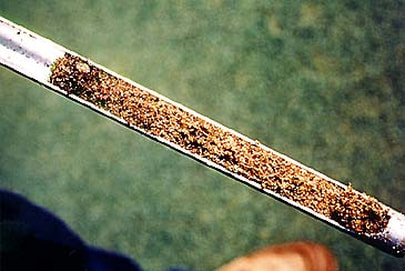Submit a one-gallon representative sample of each material to be tested. Small quantities of materials may not be representative and can produce misleading results.
Ziploc bags are the preferred container for sending samples.
Place approximately one gallon of each sample into a clean bag.
Label the outside of the sample bag using a permanent marker.
Seal and double bag samples, with the labeled sample bag inverted inside a second clean bag.
Paper labels should not be used inside sample bags and use only dry samples if using paper bags.
Ziploc bags are the preferred container for sending samples.
Place approximately one gallon of each sample into a clean bag.
Label the outside of the sample bag using a permanent marker.
Seal and double bag samples, with the labeled sample bag inverted inside a second clean bag.
Paper labels should not be used inside sample bags and use only dry samples if using paper bags.
Stockpile samples should be taken from several places in the pile and placed in double Ziploc plastic bags as described. Detailed instructions for taking samples from stockpiles can be found in this USGA article:
| Quality Control Sampling of Sand and Rootzone Mixture Stockpiles | |
| File Size: | 309 kb |
| File Type: | |
|
For existing greens or athletic fields, take about 10 soil probes with a one-inch aluminum or PVC pipe to the depth of the rootzone mix. Remove any portion of the sample that should not be included in the test results and place it in a five-gallon bucket. Mix the soil by hand and place about one gallon of the composited sample into a double Ziploc plastic bag as described. Cup cutter plugs can also be used as a sample from existing greens if they are thought to be typical of the entire green.
|
Organic materials, such as peats, are usually consistent so a random sample should be representative unless it is thought that the quality of a local product may vary.

